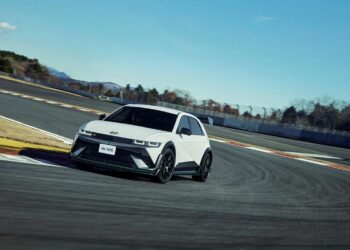The roots, the rise, the culture and the icons
Japan is widely recognized as the birthplace of drifting, a motorsport that has captivated enthusiasts around the world with its unique blend of skill, style, and adrenaline. The origins of drifting in Japan are deeply intertwined with the country’s car culture, geography, and the passion of a group of drivers who turned an underground activity into a global phenomenon. Today, Japanese drift culture remains a vital and influential force in the world of motorsports.
The Roots of Drifting in Japan
The story of Japanese drifting begins in the mountainous regions of the country, where winding roads known as “touge” became the proving grounds for a new form of driving. In the 1970s and 1980s, street racers, or “hashiriya,” would gather on these roads to test their skills in high-speed, controlled slides around tight corners. These early drifters were not only racing against the clock but also against each other, with the goal of achieving the most impressive drifts.
One of the most significant figures in the early days of Japanese drifting was Kunimitsu Takahashi, a former motorcycle racer who brought his experience in two-wheeled racing to the world of car racing. Takahashi is credited with popularizing the technique of drifting during car races, where he would intentionally oversteer through corners to maintain speed and control. His style of driving, which emphasized both speed and precision, laid the groundwork for what would become modern drifting.
Another key figure was Keiichi Tsuchiya, known as the “Drift King.” Tsuchiya took the techniques he learned on the touge and applied them in professional racing, becoming a legend in the process. His daring driving style, combined with his success on the track, helped to bring drifting into the mainstream. Tsuchiya’s influence extended beyond Japan, as he was instrumental in introducing drifting to a global audience through events, instructional videos, and media appearances.
The Rise of Organized Drifting in Japan
As drifting gained popularity in Japan, it began to move from the streets to more organized settings. The first major step in this transition was the creation of the D1 Grand Prix in 2000, the world’s first professional drifting series. The D1GP provided a platform for drifters to compete in a structured environment, with standardized rules and judging criteria. Drivers were no longer just racing for bragging rights; they were competing for titles, sponsorships, and global recognition.
The D1GP quickly became a cornerstone of Japanese motorsports, attracting the best drivers and the most dedicated fans. The competition format, which involves drivers competing in solo runs and tandem battles, added a new level of excitement to the sport. In tandem battles, two drivers go head-to-head, with one leading and the other following. The following driver must mirror the lead car’s movements as closely as possible, a challenge that requires incredible skill and precision.
Iconic Drift Locations in Japan
Japan is home to several iconic drifting locations that have become legendary in the drift community. Perhaps the most famous of these is Mount Haruna, known as “Akina” in the anime series “Initial D.” This location, with its steep inclines and tight hairpin turns, is one of the most challenging and celebrated touge routes in Japan. Many drifters have made pilgrimages to Mount Haruna to test their skills on the same roads that inspired a generation of drift enthusiasts.
Another iconic location is the Ebisu Circuit in Fukushima Prefecture. Ebisu is unique in that it is a purpose-built drifting complex, featuring multiple tracks designed specifically for drifting. The circuit was founded by Nobushige Kumakubo, a professional drifter and one of the pioneers of the sport. Ebisu hosts numerous drift events throughout the year, including the D1GP and grassroots competitions. It is also a popular destination for “drift matsuri” (drift festivals), where drifters from around the world gather to hone their skills and celebrate the culture of drifting.
The Global Influence of Japanese Drift Culture
Japanese drift culture has had a profound impact on the global motorsport scene. The techniques, styles, and philosophies developed in Japan have been adopted and adapted by drifters around the world. Events like the D1GP and the influence of figures like Keiichi Tsuchiya helped to spread drifting beyond Japan’s borders, leading to the establishment of drifting series in the United States, Europe, and beyond.
The cultural significance of drifting in Japan cannot be overstated. It is not just a sport but a way of life for many enthusiasts, embodying values such as dedication, precision, and respect for the machine. The aesthetic of Japanese drift cars, with their aggressive stances, wide body kits, and vivid liveries, has also influenced automotive culture globally.
Conclusion
Drift culture in Japan is the foundation upon which the global drifting community is built. From the mountain roads of touge racing to the professional circuits of the D1 Grand Prix, Japan has played a central role in shaping the sport of drifting. Today, the influence of Japanese drift culture can be seen in events, car builds, and driving styles around the world, a testament to the enduring legacy of the pioneers who turned a street activity into a global motorsport phenomenon.










